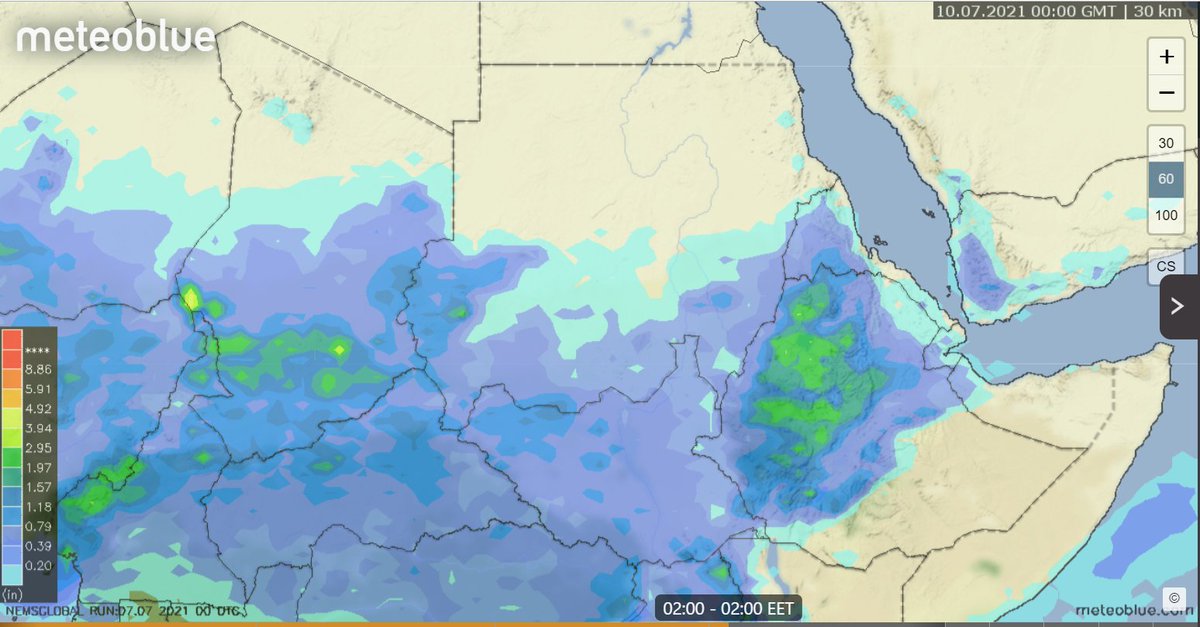
Today's recent rainfall update. 24 hours rainfall across Horn of Africa and Eastern Sahara. There are now reports of flooding in Sudan, which had very heavy rainfall yesterday.
#Ethiopia #Abbay #GERD #DesertRain
#Ethiopia #Abbay #GERD #DesertRain

And a live satellite image of the same area from @zoom_earth 

And a three day 72hour satellite rainfall estimate for the same area. The green areas over Ethiopia's highlands show rainfall of 2-3 inches (50-75mms) over this period. 

Further west the West Africa Monsoon is bringing unusually high level of rains to northern parts of Chad, Niger and Mali. Climate data via Wikipedia [Src. earthwise.bgs.ac.uk/index.php/Clim…] 







Earthwise climate data for Niger. earthwise.bgs.ac.uk/index.php/Clim…
In the red (arid desert) area (BWh) around 35mms of rain is expected. According to @Meteoblue 10-75mms has fallen in the past 72 hours.

In the red (arid desert) area (BWh) around 35mms of rain is expected. According to @Meteoblue 10-75mms has fallen in the past 72 hours.


This is a rain forecast plot for the same area showing 72 hours rainfall till Saturday midnight (from tomorrow) as the rain band moves west Nigeria sees significant rain and Mali's rains move north. 

Climate data for Mali predicts around 27mm for the red area in an average July. Here we see 5-20mms of rain over 72 hours. earthwise.bgs.ac.uk/index.php/Clim… 



According to forecasts a big burst of precipitable water is growing in this area as jet-stream winds carry wind south from the Mediterranean over Egypt and Libya.
https://twitter.com/althecat/status/1412443519101308930?s=20
... threadfix...
https://twitter.com/althecat/status/1412715353088696322?s=20
The animation above shows PWAT anomaly, i.e. the level of variation form normal areas of water patterns at this time of year. This animation shows a view of the raw PAWT data. Rainfall forecasts show significant rainfall in Mali and Mauritania in coming days.
Watch this space. I will be keeping an eye on this. In terms of the climate change implications of all of this it is worth having a read about the "Sahara Pump Theory". en.wikipedia.org/wiki/Sahara_pu….
/ENDs
@Threadreaderapp unroll
@Threadreaderapp unroll
• • •
Missing some Tweet in this thread? You can try to
force a refresh









